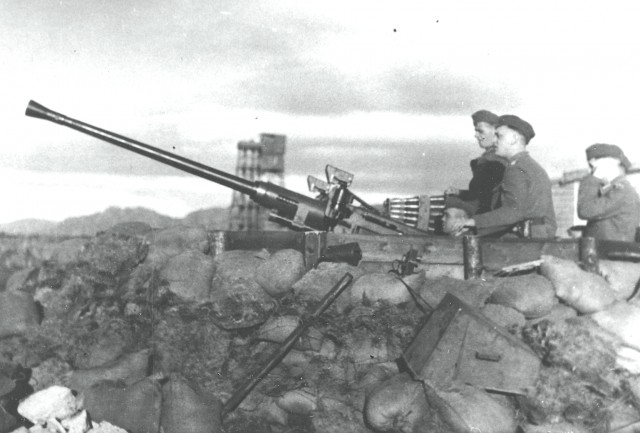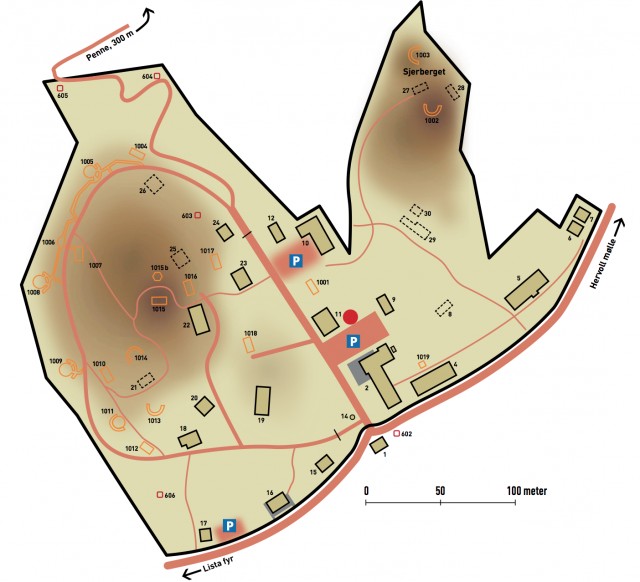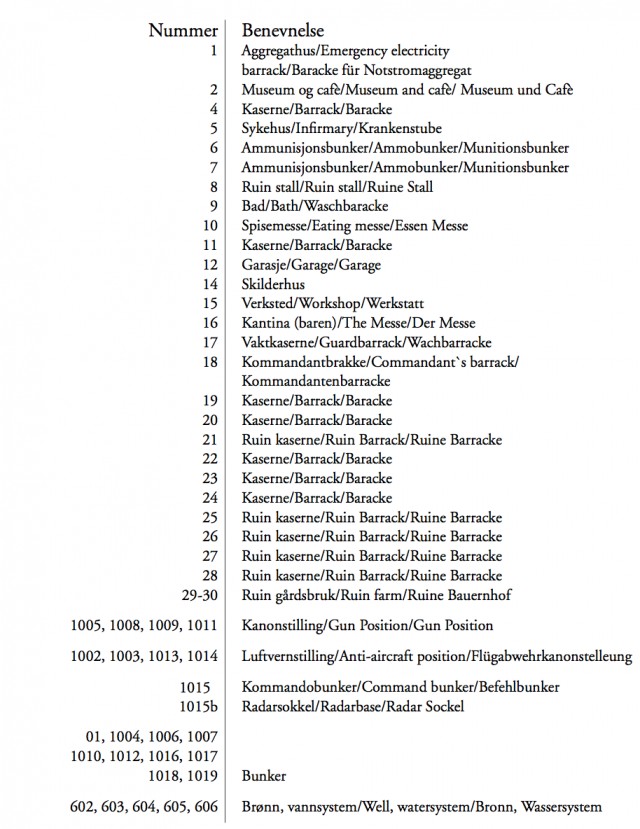Anti-aircraft position
During the occupation between 1940 and 1945 the Lista peninsula was considered as a possible arena for an allied invasion. The result was a major expansion of military fa- cilities, and the term fortress was taken in use. In German this became “Festung Lista”.

Nordberg fort was a part of this “festung”.The four anti-aircraft positions at Nordberg should protect the fort against air attacks.Two positions were placed on the height towards the east (Sjerberget) and two on the hill to the west.Three of them were built of stone and concrete, and is therefore relatively intact. Position 1013 was smaller and had only an earth embankment around it.Today you only find a small concrete foun- dation here.
The peaks of Sjerberget are extended so that the positions appear to be part of the terrain.This was done to make them harder to spot from the air. Note the masonry at position 1003, it is particularly elaborate.
Close by are the ruins of barracks 21, 27 and 28.These barracks housed the soldiers who at any time were on duty for the anti-aircraft weapons.
This is a cultural heritage site. Do not walk on the concrete roofs of the ammunition rooms, as these can collapse.

